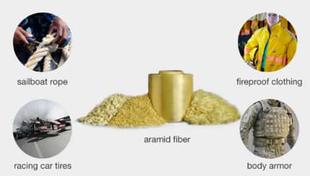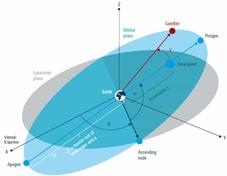
EMI Shielding:Metal Braid vs Metal Clad Aramid Fiber
Compare EMI Shielding methods viz. traditional metal braid and metal clad Aramid Fiber.Learn their advantages & disadvantages and explore difference between them.
Showing 25 posts (Page 44 of 138)
Advertisement

Compare EMI Shielding methods viz. traditional metal braid and metal clad Aramid Fiber.Learn their advantages & disadvantages and explore difference between them.

Explore Emitter Coupled Logic (ECL) circuits: their key characteristics, implementation using bipolar junction transistors (BJTs), and examples of ECL inverter, NAND, and NOR gates.

Explore the differences between eMMC and UFS storage, comparing speed, performance, energy consumption, and more to understand which is better for your device.

Explore the fundamentals of emotion sensing technology, its advantages in stress management and customer service, and its challenges related to data validation and accuracy.

Explore the differences between encoding and modulation in data communication, with examples and advantages of each technique for signal conversion.

Explore the fundamentals of encryption and decryption, including processes and differences, in securing data transmission across wired and wireless networks.
Explore energy harvesting sensors, their advantages, and leading manufacturers. Learn how these self-sufficient sensors are used in IoT and automation.

Explore the pros and cons of solar, mechanical, thermal, and biochemical energy harvesting techniques. Understand their potential and limitations.

Understand the distinctions between EnOcean frames, telegrams, and subtelegrams. Explore the structure and function of each data unit in EnOcean wireless technology.
Explore EnOcean frequency bands used in Europe, China, USA, Canada, Asia, Japan, and globally. Discover optimal bands for building automation and IoT applications.
Explore the EnOcean Serial Protocols, ESP2 and ESP3, understand their features and the key distinctions between them in EnOcean wireless technology.

Explore the pros and cons of EnOcean wireless IoT technology, focusing on its unique energy harvesting capabilities and limitations.

Explore EnOcean wireless technology: an energy-harvesting solution for M2M and IoT. Learn about its key features, specifications, and advantages in battery-less sensor applications.

Explore the fundamentals of entropy, its measurement in bits, decits, and nats, and the equation for calculating entropy in Markov sources.

Learn the basics of EPABX (Electronic Private Automatic Branch Exchange) systems, how they work, and key specifications to consider when purchasing one.

Find out what ephemeris data is, how it describes satellite orbits and the benefits and applications in navigation and communications.
Learn the distinctions between EPROM, EEPROM, and Flash EPROM, covering cell size, programming, erasing techniques, voltage, and performance.
Explore the benefits and drawbacks of EPROM memory, including its non-volatility, reprogrammability, and limitations like UV erasure and high power consumption.

Explore the differences between EPS (Evolved Packet System) and EPC (Evolved Packet Core) in LTE networks, including architecture and components.
Understand Erlang and Grade of Service (GoS) in telephone networks, including Erlang traffic models and example calculations.

Explore various error detection methods such as VRC, LRC, CRC and Checksum used in computer networks with examples.

Learn about Error Vector Magnitude (EVM), its equation, and significance in wireless systems for assessing modulated signal quality in complex modulation schemes.

Compare Early Start (ES), Early Finish (EF), Late Start (LS), and Late Finish (LF) in project scheduling. Learn calculations and their importance in project management.

Explore the Esaki diode (tunnel diode): its negative resistance, quantum tunneling principle, I-V curve, applications in oscillators, mixers, and more.

Learn about ESD protection diodes, their function in protecting circuits from electrostatic discharge, key characteristics like avalanche voltage and low capacitance, and major vendors.
Advertisement